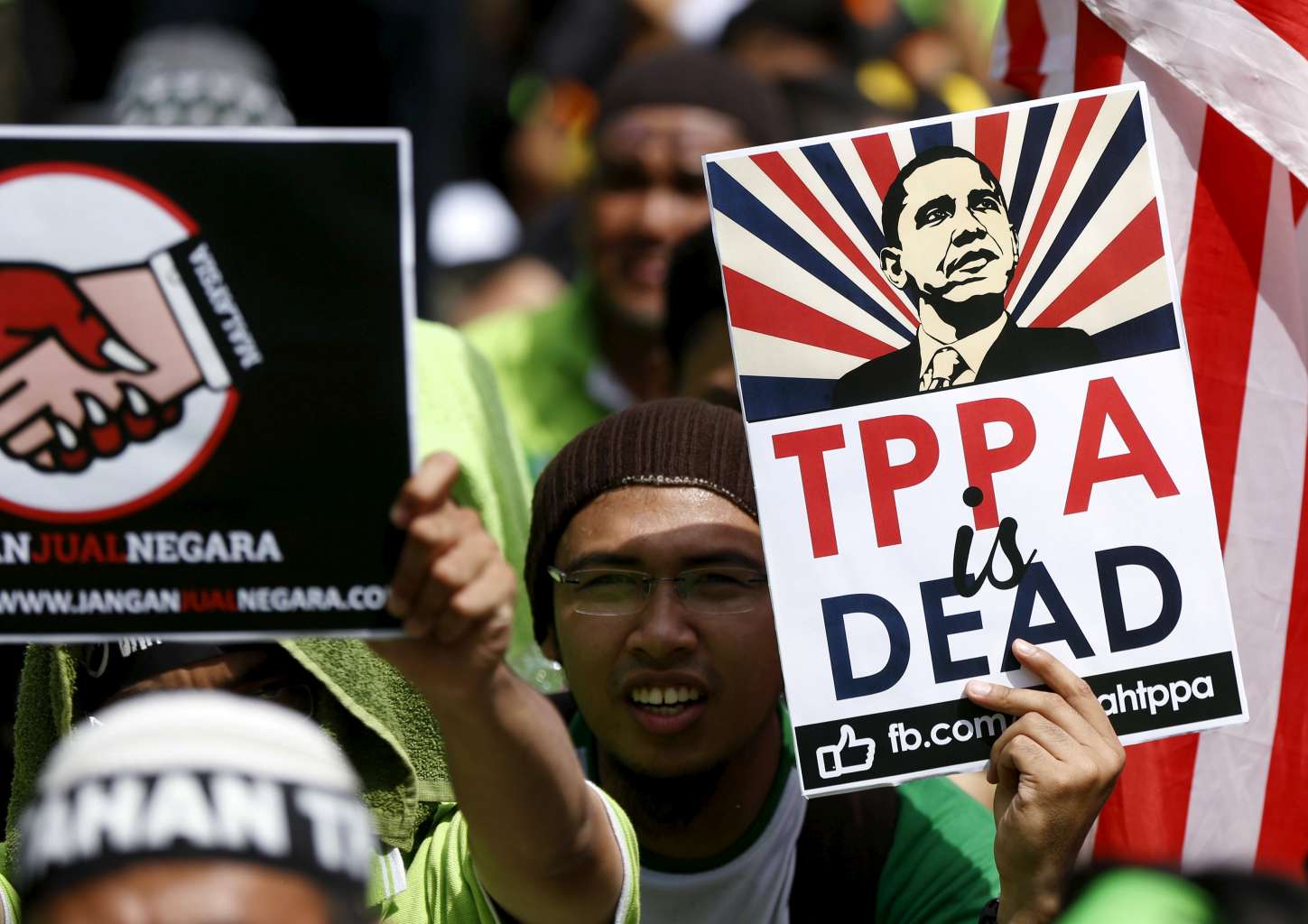TPP, RCEP, FTAAP - a user's guide to alphabet soup of trade deals
Sign up now: Get insights on Asia's fast-moving developments

Protesters wave placards at a rally against the Trans Pacific Partnership (TPP) free trade pact in Kuala Lumpur, Malaysia, Jan 23, 2016.
PHOTO: REUTERS
Follow topic:
This article was first published on Nov 20, 2016 and updated on Jan 25, 2017
The United States' formal withdrawal from the 12-nation Trans-Pacific Partnership (TPP) on Monday (Jan 23) could spell bad news for South-east Asia, casting the spotlight on other trade deals that the region can fall back on.
One of those is the Regional Comprehensive Economic Partnership (RCEP), which is backed by China.
Here is a guide to the main regional free trade pacts that are on the table.
TPP
Led by the United States, the TPP involves 12 countries including Japan, Malaysia, Vietnam, Singapore, Brunei, Australia, New Zealand, Canada, Mexico, Chile and Peru.
It was previously described by the US as a "gold standard" for all free trade agreements because it goes beyond just cutting tariffs. It includes removing a slew of non-tariff measures and requires members to comply with a high level of regulatory standards in areas like labour law, environmental protection, intellectual property and government procurement.
The TPP notably excludes China, the main Asian power and the world's second-biggest economy.
The TPP was widely regarded as the economic plank of former US President Barack Obama's strategic rebalance to Asia.
Mr Obama's successor, Mr Donald Trump, however, is not a fan of the deal, calling it a "job killer". One of his very first actions after taking office was to sign an executive order to formally withdraw from the TPP.
RCEP
Backed by China, the RCEP involves the 10 members of the Association of South-east Asian Nations (Asean) - Brunei, Cambodia, Indonesia, Laos, Malaysia, Myanmar, the Philippines, Singapore, Thailand and Vietnam - plus their regional trading partners China, Japan, South Korea, Australia, New Zealand and India.
It notably excludes the United States.
Compared with TPP, the RCEP also aims to cut tariff and non-tariff barriers but calls for lower and more limited regulatory standards.
It also exempts certain goods from the tariff cuts to protect local sectors and allows less developed members more time to comply.
Governments missed a deadline to conclude negotiations last year. But the RCEP has recently been under the spotlight as the fate of the TPP hangs in the balance.
FTAAP
The Free Trade Area of the Asia-Pacific (FTAAP) is a long-term goal to link Pacific Rim economies from China to Chile, including the United States.
It aims to harmonise the "noodle bowl" of regional and bilateral free trade agreements that had proliferated following the collapse of the Doha Round of the World Trade Organisation talks in 2006.
Asia-Pacific policymakers say there are several pathways to realising the FTAAP, including both the TPP and RCEP.
Analysts say that with the uncertainty over TPP, the RCEP has emerged as the main pathway towards the realisation of a trans-Pacific free trade agreement.

